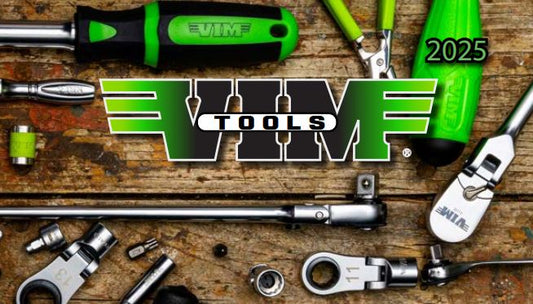Common Surface Treatments for Automotive Repair Tools
— How Chrome Plated, Black Oxide, Mirror Polishing, and Power Coating Affect Quality and Durability for tools
- 1. Why Surface Treatment Matters for Automotive Tools
- 2. Common Surface Treatments Used in Tool Manufacturing
- 3. How Surface Finishing Impacts Tool Performance
- 4. Surface Finishing and Brand Positioning
- 5. How to Choose the Right Surface Treatment
- 6. Projen’s Role in Surface Treatment Optimization
- 7. Conclusion
1. Why Surface Treatment Matters for Automotive Tools
In the automotive repair industry, tools are constantly exposed to oil, moisture, and friction.
That’s why surface treatment plays a crucial role — not only for appearance, but also for rust prevention, wear resistance, and overall durability.
A tool with proper surface finishing can last years longer and maintain its performance, while poor surface treatment often leads to corrosion, wear, or even tool failure.
This is why many professional brands and OEM buyers consider the finishing process one of the most important quality indicators.
💡 Taiwanese manufacturers are often known for maintaining stable plating quality and consistent finishing standards compared to mass production in China.
2. Common Surface Treatments Used in Tool Manufacturing

| Surface Treatment | Main Features | Typical Applications | Pros & Cons |
| Chrome Plating | Bright metallic finish, strong corrosion and wear resistance | Sockets, ratchets, pliers | Excellent durability and appearance, but higher cost |
| Black Oxide | Matte black look, mild corrosion protection | Wrenches, sockets, pneumatic tool parts | Economical and anti-glare, but limited rust resistance |
| Zinc Plating | Light blue or colorful finish, good corrosion protection | Screws, extension bars, accessories | Cost-effective, suitable for mass production |
| Polishing | Mirror-like surface, improves smoothness and appearance | Pliers, handles, wrenches | Very aesthetic, but needs extra coating for corrosion protection |
| Powder Coating | Thick, colored coating, good wear resistance | Toolboxes, stands, handles | Excellent protection and color variety, but less metallic feel |
| E-Coating (Electrophoretic Coating) | Even coating, strong salt spray resistance | Tool racks, metal brackets | Medium cost, customizable colors |
| Nickel Plating | Bright silver finish, harder than zinc | Precision tools, small parts | Great hardness and corrosion resistance, slightly higher cost |
3. How Surface Finishing Impacts Tool Performance
Each finishing method serves a different purpose. Here’s how they compare in practice:
- Corrosion Resistance: Chrome > Nickel > Zinc > Black Oxide
- Aesthetic Appeal: Polished Chrome or Nickel Plating leads the way
- Cost Efficiency: Black Oxide is the most economical option
🔧 Example:
- Tools used in humid or outdoor environments → Choose Chrome or Powder Coating
- Tools for factory or workshop use → Black Oxide or Zinc Plating for cost efficiency
- Premium tool brands → Mirror Polishing + Chrome Plating for brand image
4. Surface Finishing and Brand Positioning
The type of surface finish can reflect your brand’s quality level and market positioning.
| Brand Level | Typical Finish | Description |
| Entry-Level | Black oxide or zinc plating | Focused on affordability and function |
| Mid-Range | Chrome or nickel plating | Balanced look and durability |
| Premium/Professional | Multi-layer plating or e-coating + polishing | Combines aesthetics and long-term performance |
Projen Insight:
When supporting our clients’ OEM/ODM projects, we help select the most suitable surface finishing method based on their target market, brand level, and cost-performance ratio.
This ensures the right balance between appearance, durability, and price competitiveness.
5. How to Choose the Right Surface Treatment
Here are a few practical tips when sourcing or developing your automotive repair tools:
- Consider the working environment.Humid or coastal regions require stronger corrosion resistance. Indoor workshop tools can use economical finishes.
- Humid or coastal regions require stronger corrosion resistance.
- Indoor workshop tools can use economical finishes.
- Understand your market’s requirements.European and U.S. buyers often require salt spray testing for corrosion standards. Tool aesthetics are highly valued in retail and professional tool brands.
- European and U.S. buyers often require salt spray testing for corrosion standards.
- Tool aesthetics are highly valued in retail and professional tool brands.
- Align finishing with your brand image.Chrome and nickel give a premium, clean appearance. Black oxide offers a rugged, industrial style.
- Chrome and nickel give a premium, clean appearance.
- Black oxide offers a rugged, industrial style.
- Balance cost and function.Sometimes a mid-range solution like zinc plating + polishing delivers both value and appeal.
- Sometimes a mid-range solution like zinc plating + polishing delivers both value and appeal.
6. Projen’s Role in Surface Treatment Optimization
As a Taiwan-based tool supplier with over 35+ years of experience, Projen works with multiple production lines across Taiwan and Asia to ensure that our customers always receive the best combination of quality and price.
When developing new tool series or private label brands, we:
- Compare finishing options from different manufacturers
- Perform visual and corrosion-resistance inspections
- Provide coating samples and test reports upon request
- Ensure the finish meets market standards before mass production
Whether you’re looking for chrome-plated professional sockets or powder-coated tool storage systems, our sourcing network and technical expertise can help your brand stand out in a competitive market.
7. Conclusion
Surface treatment is more than just the final step of manufacturing —
it’s what determines how long a tool lasts, how good it looks, and how customers perceive your brand.
By understanding each finishing method and choosing the right one for your application, you can improve product quality, enhance market appeal, and reduce after-sales issues.
If you’re developing your own line of automotive tools or need expert guidance on OEM/ODM manufacturing, Projen can assist you from surface treatment selection to final packaging and logistics.



